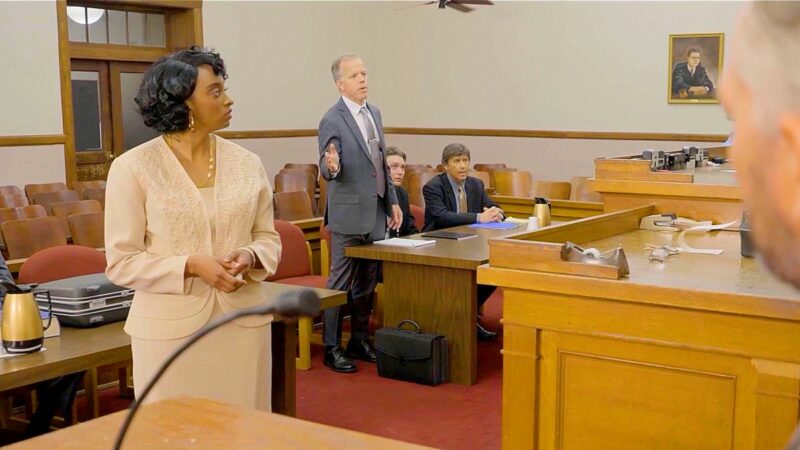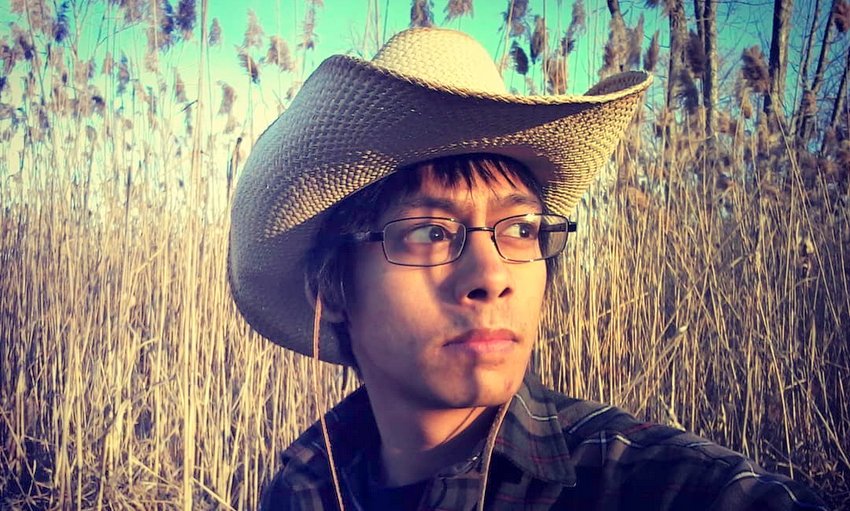
Q: How was the Production?
Mark Schoonmaker: It was a very challenging shoot. We filmed in Southhold, New York in late October 2016. My cast was flown out from Los Angeles, and Atlanta; my crew were all New York based. The cast, and crew were lodging in a beach house, and down the road we were lucky to film in a secluded private beach. I had a minimal crew on this production, and we filmed for only two days. For the production I was able to use my friend’s Black Magic Ursa EF camera.
My director of photography, Peter Garafalo supplied the lenses, lighting equipment, rechargeable camera batteries, and a dolly. I hired my first assistant camera, Emir Fils-Aime through Garafalo. I originally wanted to have production in Martha’s Vineyard. The aesthetic setting found in Spielberg’s Jaws (1975) was always in my mind; a small town with white picket fences. Unfortunately, I couldn’t find a location, and figure out location permits in time.
That’s when my producing partner, Phillip M. Ramos recommended his sister’s place in Southhold. I wanted the setting to feel familiar to convey a sense that anything bad could happen in your own backyard. And as it turns out, the location we ended up using looked like what I always envisioned. It fit the noir mystery crime drama vibe I was looking for. The beach we shot at actually had a white picket fence as well.
READ: Interview with Mark Schoonmaker
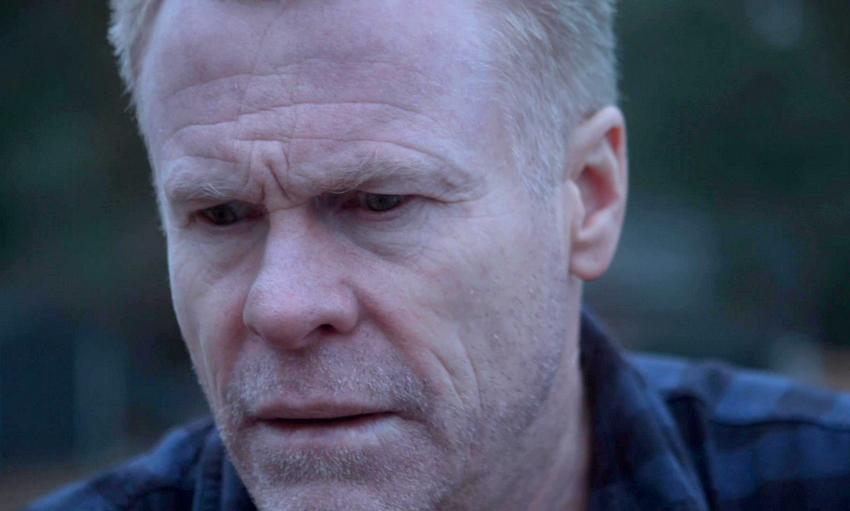
Q: Any technical challenges?
Mark Schoonmaker: Yes, there were several. I wanted to film in natural sunlight, and capture a lot of shadows in the photography. Unfortunately, it was cloudy for the majority of the shoot. The first day wasn’t so bad; it was changing constantly between cloudy, and sunny which was frustrating. We used Ramos’s car for filming the opening scene featuring Wilcox’s as the film’s protagonist, Floyd Tanager. Ramos, and I did a table read with actors: Wilcox and Stefan Rollins. Rollins portrays the lead antagonist, Edgar Torres in the film. During our table read for filming Day 2, Wilcox, and Rollins had constructive feedback which we used to make changes to the script.
So the actors can be emotionally invested, and fully understand the mind set of the character they are embodying. So the rest of the evening while actors were sleeping, Ramos, Garafalo, and I were doing a page 1 re-write of the script. We changed and shifted around a lot of dialogue, and actions. The Day 2 filming is imperative to get right on paper before we shot anything because their dialogue, actions, and exchanges is what will help propel the narrative of the story we are telling. The film is heavily reliant on the performances given from Wilcox, and Rollins.
Day 2 was a mix of severely cold temperature mixed with heavy freezing rain, and non-stop winds. It’s a true testament to the actors commitment and professionalism doing what they did in those harsh conditions. They were freezing their butts off and being rained on constantly. In the footage you could never tell their were shivering, and uncomfortable.
The only technical challenges were battling the uncontrollable weather, and the camera batteries which kept on running out juice quickly. As we were poured on by the heavy rain, my crew had to put a small tarp over the camera so it would prevent any water damage to the lens and camera itself. At one point when it was raining heavily we had to embrace the elements and film in it or else we weren’t ever going to finish production in time.
Q: What was the experience working with actors?
Mark Schoonmaker: It was an absolute thrill. I had an incredible experience working with both of them. They are extremely gifted, and so giving. Both of their performances are so engaging from start to finish. I plan to have both of them to reprise their roles in the feature length version to expand the story and characters of Gridlock.
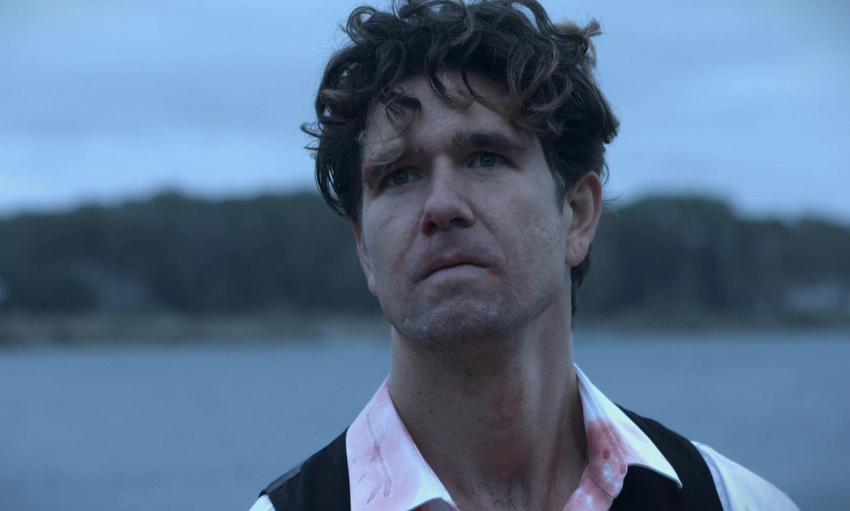
I had an opportunity to work with Wilcox on a previous short but it was very brief. Wilcox has a strong on-screen presence, and so I felt in our first collaboration I didn’t bring out the best in him. And wasn’t satisfied on how I underused his talents and unseen potential. Wilcox improvised a couple lines from the script on the spot. One in particular that stuck with me was when he says in the film “You’re not exactly in the catbird seat anymore.”
The phrase implies Wilcox’s character has the upper hand, and reinforcing his dominance. Wilcox’s character in Gridlock is very straight forward on paper. His character has one goal and is in pursuit of seeking answers. The way he brought the character out with such raw emotion seriously elevated things to a whole new level. When you watch him on-screen you really feel his pain.
With regards to Stefan Rollins, a mutual friend in L.A. connected me to him a couple years ago. I was aware of Rollins’ acting work opposite Josh Duhamel in Spaceman (2016). It didn’t hit me until I saw his work in Powers the series (2016) opposite Sharlto Copley that I knew he would be fitting to portray the antagonist in Gridlock. Rollins’ performance in Gridlock really blew me away and really made it his own. It was even bigger challenge for Rollins’ even though Rollins’ character is the antagonist of the piece.
There’s an arc to his character and yet he’s full of mystery.I wanted to raise the question; do we side with Floyd or do we side with Edgar? So naturally as the film progresses, Rollins’ would have to subtly convey himself in a different manner as tension, and suspense builds leading to a climatic reveal. It all has to be right in regards to pacing, how he delivers his lines, and his tone.
One thing that was fun to watch was Rollins’ physical performance. It’s very nuanced. He had a lot of freedom to do what he wanted artistically and I was seriously impressed with what I was capturing and where he took it. His improvised performance reminded me of a story I read about Heath Ledger’s improvised clapping during the jail scene in The Dark Knight (2008).
A mix between Rollins’ choice of laughter at times, subtle movements, the way he exerts himself in a unique posture conveys an unpredictability that I hope the audience sees. The personality Rollins’ conjured up with the character was brilliant.
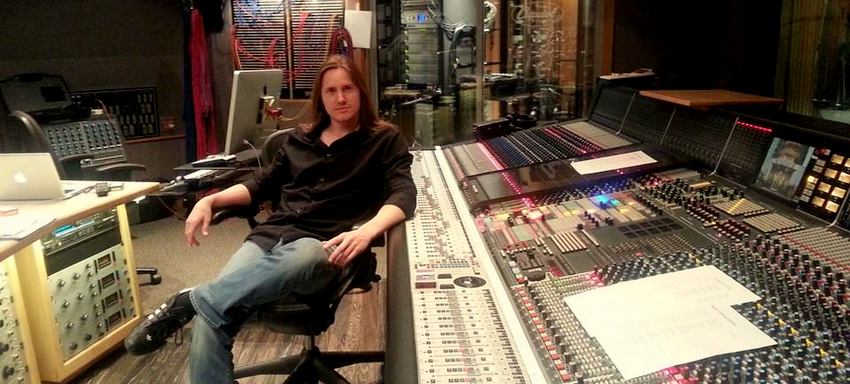
indieactivity: At what point did you think you were making something special?
Mark Schoonmaker: That’s an interesting question. It hit me twice. Once when I was filming on location during Day 2. It was when Wilcox, and Rollins were going toe-to-toe with each other. It was quite riveting experience seeing them perform. I knew right then we were creating something special. The second time was when I was in the editing bay, and cutting the film together. And when I locked picture on it, color corrected, and the music was in, that’s when I knew, I had something that was super effective featuring powerhouse performances.
indieactivity: How was the Post-Production process?
Mark Schoonmaker: It was extremely grueling, and exhausting. It seriously took a toll on me for a year after production. I decided to edit the film myself. I’ve watched it so many times that I really got sick of looking at it. All great footage nonetheless. The only thing threatening during this stage was the audio. And unfortunately there were several takes of audio I did not have. So for the majority of 2017 I spent rediscovering audio files. At times I would recut the audio from 5 different audio tracks to make it line up with actors mouth. And also needed it to fit the pace of the exact moment for certain frames of dialogue I did not have.
I made an editorial decision for the opening scene which features Wilcox to have it begin in black and white. Then after Wilcox’s is finished giving his internal opening monologue to set up the situation. I chose black and white because I wanted to feel we were in his head, we are solely focused on his character and nothing else. To further assist to get behind Wilcox’s motives. So while we are watching in black and white, he discusses the past, and when we slowly fade into color. We are in the present, and moving forward. It’s a very minor edit but its an essential one to help guide my viewers to understand the narrative structure, and sequence of events.
I got the editorial idea from when I saw Ridley Scott’s film, All the Money in the World (2017). Their film has a similar approach in regards to the opening monologue sequence. Coincidentally I noticed Scott’s film had a similar color palette as well. The second reason for having my film start out in black and white is because when I filmed on location during Day 1 the weather kept on changing from cloudy to sunny. So if I somehow didn’t change the lighting in the beginning it wouldn’t match up with the cloudy aesthetic for the rest of the film.
The climax to Gridlock is quite similar in tone to the final scene of David Fincher’s Seven (1995). It was never in my mind when I conceived the story. But I am pleased with the results. Overall in regards to the film as whole, I had to make sure the pacing was right, and it transitioned and flowed naturally.
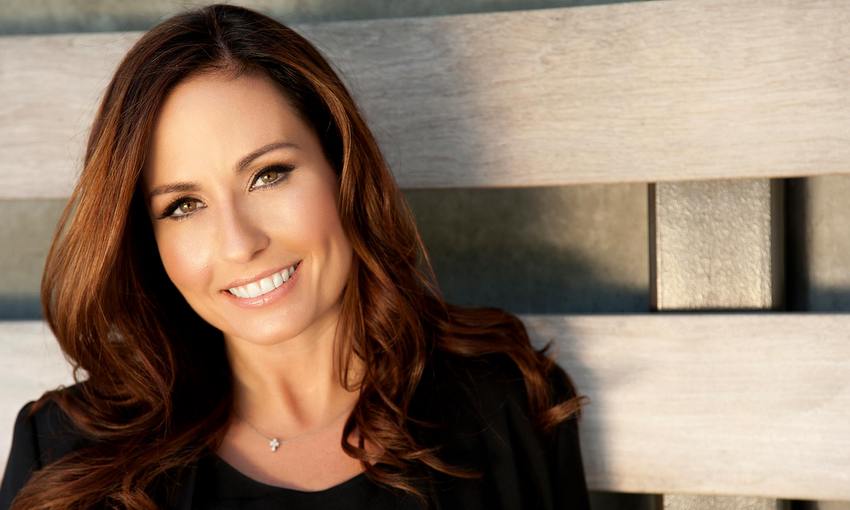
I hired composer, Lasse Elkjaer. This will be the second time I’ve had the chance to collaborate with Elkjaer. He created an amazing track score which suited the film perfectly. I am quite pleased with his music so far. The only challenge he faced was creating a particular theme which fit the emotional beats, and tone of my film. It’s an invaluable tool in helping to propel the story forward; all while bringing out his own particular stamp music-wise. He absolutely nailed it. His music added an extra layer of character, atmosphere, texture, and a specific attitude which as a result helps heighten drama, and tension in the piece.
indieactivity: How do you want people to walk away when they see Gridlock?
Mark Schoonmaker: I want an audience to enjoy the ride, and be entertained by the performances. I want them to be emotionally invested with the characters, and story. This is very much a short film, but not in the traditional sense. My team crafted a 7 min scene which I extracted from the feature length script of the same title. I want them to walk away being moved emotionally by the scene, and hopefully it’ll linger on afterwards, and resonate. And so for an audience reaction they’ll demand to see more of the particular world I crafted with my team.
My focus on this piece was to use one primary location, minimal cast, bring out strong performances from my actors, and ultimately tell a coherent story. I always want my work to speak for itself, and so I hope any of the work I produce resonates with people. That’s the similar mindset I plan to apply moving forward as I produce and direct feature films I seem to gravitate to a small contained place to film.
Working from an independent background by limiting production to a single location for a shoot; my only challenge is to make something uniquely distinguishable out of my restrictions. And bring out the best from everyone involved while being creative, and inventive with a small budget. So in essence the only thing I always have to worry about is bringing out stellar performances from the actors, and telling a coherent story.
indieactivity: What’s next?
Mark Schoonmaker: I’m in prep to make “Castlemont,” a ‘90s period drama with producing team: Keri Ann Kimball, Matt Cunningham, and Phillip M. Ramos. Kimball will produce the film through her Kimball-Entertainment production company banner. The film will star Johanna Watts, Alex Essoe (Starry Eyes, Midnighters) in undisclosed, leading roles amongst a minimal cast. I am also circling Scott Speedman (Underworld, The Strangers) for a key role in the film.
The film will be a painful, complex and intense look at loss, choices, and consequences. This project will be my feature length directorial debut. This is a personal story which I’ve kept close to the heart. I decided early on in the writing process to make the lead 9 year old protagonist depicted as an Asian-American to be as true to myself, and authentic as possible.
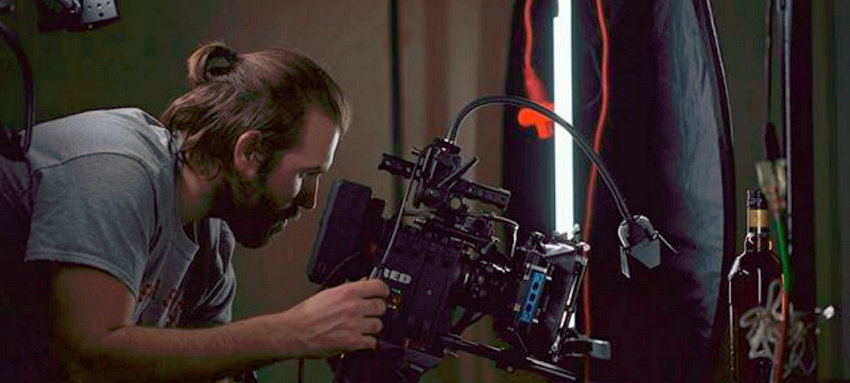
Another project I am in the midst of finishing development on is a coming-of-age drama mystery thriller titled “Mordy,” which I’ll make after. I am consulting with actors Katherine Waterston (Fantastic Beasts, Alien: Covenant), and Patrick Wilson (The Conjuring, Aquaman) for undisclosed, leading roles. The film will delve into heavy themes of alienation, identity, isolation, self-discovery, obsession, bullying, friendship, communication, and family. Early inspiration on tone was The Exorcist (1973), and What Lies Beneath (2000).
Before I met actor Billy Crudup, who is a hero of mine, a close mutual friend emailed Waterston last August and vouched for me telling her you should meet this filmmaker [Schoonmaker], because he’s interested in collaborating with you. She agreed to meet me in early December. One day I asked her if we could meet at the Tribeca Film Festival since I knew she would be there promoting her new film State Like Sleep.
Throughout that weekend I was able to get to know her, as a person as well as an actor, and pitch her this film. Both Patrick, and Katherine have given me their time several times, and they never had to. It was through our meetings which they saw my passion, drive, and potential. So that seriously meant a lot to me.
Another project I am in the midst of finishing development on is a coming-of-age drama mystery thriller titled “Mordy,” which I’ll make after. I am circling and consulting with actors Katherine Waterston (Fantastic Beasts, Alien: Covenant), and Patrick Wilson (The Conjuring, Aquaman) for undisclosed, leading roles. The film will delve into heavy themes of alienation, identity, isolation, self-discovery, obsession, bullying, friendship, communication, and family. Early inspiration on tone was The Exorcist (1973), and What Lies Beneath (2000).
Cinematographer David Christopher Pitt will serve as Director of Photography for both upcoming feature films. I originally wanted to use my friend, Andrew Palermo who previously was cinematographer on You’re Next (2013), and A Ghost Story (2017). But became too busy with other projects to get involved. Palermo recommended Pitt, and I immediately reached out to him. We gelled together nicely. Pitt’s interested to pursue and explore bold narratives as much as I do. He was mentored by David A. Armstrong (cinematographer on Saw (2004)), and so has a vast spread of knowledge and experience when it comes to lighting, and photography.
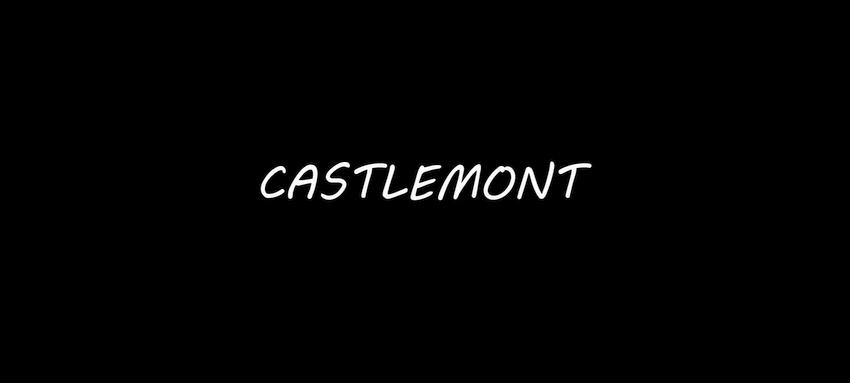
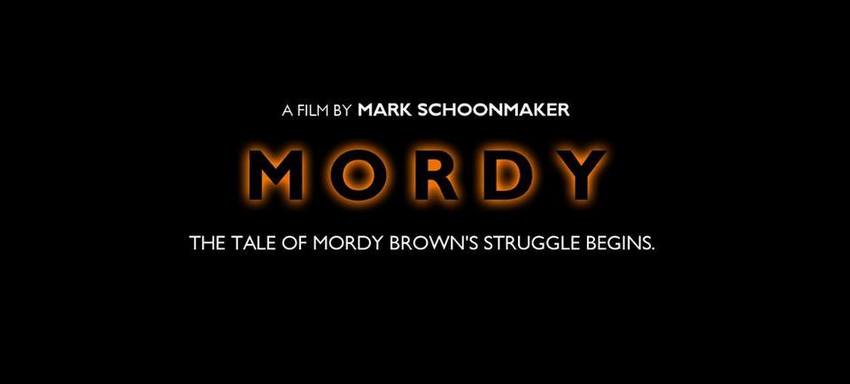
A coming-of-age drama which follows 14 year old, Mordy Brown, an adopted emotionally damaged boy, who journeys through a doomed life. Mordy fails to form friendships and struggles to communicate with anyone about his secret. In the midst of these challenges, another classmate, Keff, continues to torment Mordy and the burden of his family’s dark past. Mordy’s well-being is in danger, as a repressed traumatic, childhood memory comes back to haunt him which he has attempted to forget. He becomes deeply obsessed to have Keff accept his friendship
Follow Mark Schoonmaker on Social Media
IMDb
Facebook
Twitter
Instagram
Vimeo
LinkedIn
In Camera by Naqqash Khlalid Launch on VOD April 29
Naqqash Khlalid’s Directs Nabhan Rizwan. In Camera stars an EE BAFTA Rising Star Award Nominee.
2025 Philip K. Dick Sci-Fi Film Festival Award Winners Announced
Vanessa Ly’s Memories of the Future Awarded Best PKD Feature
Dreaming of You by Jack McCafferty Debuts VOD & DVD for April Release
Freestyle Acquires “Dreaming of You” for April 15th Release
Hello Stranger by Paul Raschid set for London Games Festival & BIFFF
The film Is set for an April 10th Premiere at The Genesis Cinema in London (LGF) and BIFFF
Daydreamers Official Trailer by Timothy Linh Bui: Released by Dark Star Pictures
Daydreamers Vietnamese Vampire Thriller – May 2nd release
Afternooner by The Harrow Brothers: Funniest Movie of the Decade on VOD & DVD April
Freestyle Acquires “Afternooner” for April Release

